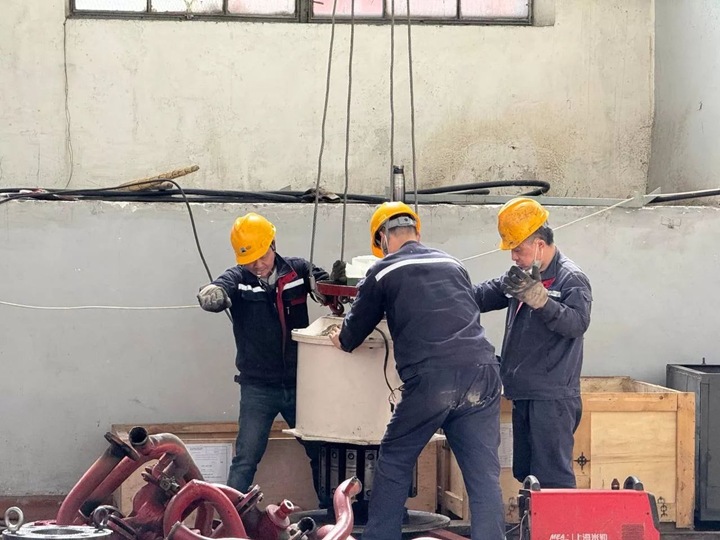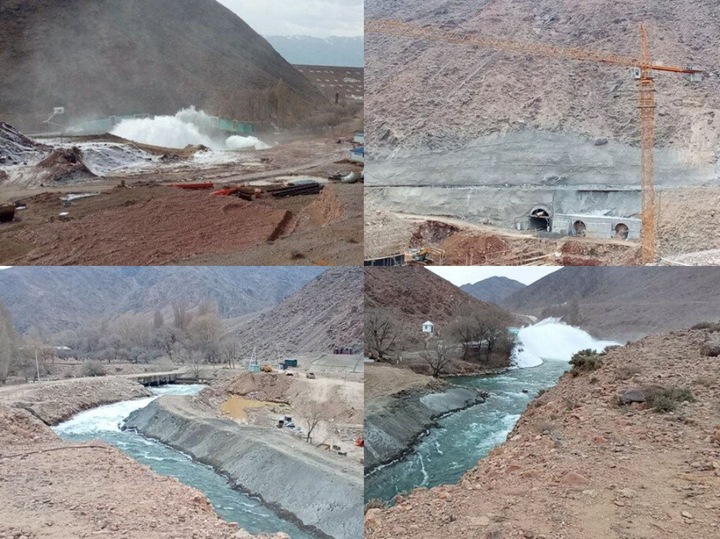Petroglyphs, ecology and tourism: activists against the HPP on the Koksu River
Large-scale construction of hydroelectric power stations is planned on the Koksu River in the Zhetysu region of Kazakhstan. Archaeologists are against it, as the unique and not fully explored Eshkiolmes gorge, the largest collection of petroglyphs in Kazakhstan, included in the preliminary list of UNESCO World Heritage sites, may be under threat. Environmentalists, representatives of the tourism industry and the rafting federation are also against it. The publication “Power” tells what is known about the companies that are going to build them, why public figures are against it, and how government agencies respond to their objections:

Andrei Tansari, a social activist from Taldykorgan, is one of those who regularly goes with his family to the Koksa River to relax and go fishing. On one of these trips, he noticed that containers for construction workers were being brought to the river. He made a publication about it on social networks. Soon he came back to the river to rest and saw that the equipment had already been brought there. The social activist wrote about it again in social networks. Both publications did not cause much reaction.
“But [then] we didn’t understand the scale of it all,” he says. – Only after we started making inquiries, we learned that about 10 HPPs will be located on the Koksu River.”
Meanwhile, active construction began on the land of the forest fund, but only after several publications in social networks did a passport finally appear at the facility.
Olga Gumirova, executive director of the Petroglyph Hunters Foundation, said that 10 hydroelectric power plants are planned to be built on a river section about 60 kilometers long, their construction will be carried out under the green energy development program.
“They are scattered in three districts, and, as we found out, the leadership of these districts is not even aware that other hydroelectric power stations will be built nearby. Part of the HPPs will have retaining dams,” Gumirova said at a press conference in February. At the same time, public activists cannot obtain a complete set of documents for any of the planned hydroelectric power plants.
The list of HPPs on the Koksu River is in the plan for the development of the hydropower industry until 2030, but since it was approved, changes have been made to it. Now, according to the Ministry of Energy, there are seven hydroelectric power plants with a total installed capacity of 151 MW in the plan.
In addition, some planned hydroelectric power plants are not included in the ministry’s plan, but the regional energy department provided data on them to the “Authorities”.
Who is behind the construction?
Rudnichnye HPP-1 and HPP-2, the preparation for the construction of which was discovered by Andrei Tansari, is being built by Energobildservice LLP. The newspaper “Orda” reported that the ultimate beneficiaries of this company are the co–owner of “Elitstroy Group” Kairat Orazbekov, businessman Alain Baigazin and the holding KAZ Minerals, owned by billionaire Vladimir Kim and partners.
The cost of the project is more than 44 billion tenge, the lion’s share of the funds of Energobildservice LLP was borrowed last year from the Development Bank of Kazakhstan, its participation will amount to 37.5 billion tenge. One of the companies through which KAZ Minerals owns a stake in Energobildservice LLP is a private Company Powerbridge Limited since 2023 headed by Ruslan Iskakov, until 2022 – Chairman of the Development Bank of Kazakhstan, who previously worked for a long time in its subsidiary.
Kairat Orazbekov’s brother, Anuarbek Orazbekov, is one of the ultimate owners of another company planning to build a HPP on Koksu – Koksu Kuat LLP.
Koksu Hydro LLP, which plans to build a 53 MW Kyzylbulak HPP on the Koksu River, belongs to Bauyrzhan Ospanov, who ranked 66th among the 75 richest businessmen in Kazakhstan in 2024 according to Forbes.
Eskeldinskaya HPP LLP and Verkhne-Talaptinskaya HPP LLP belong to the same group of businessmen from different fields, among them Aibek Umbetalin, an entrepreneur and director of the BTC KZ mining center based in Ekibastuz. The same businessmen own Cascade NRG, which also plans to build one of the hydroelectric power stations on the Koksu River.
According to the Department of Energy, another HPP on the boundary of Koksuisky and Eskeldinsky districts is planned to be built by Koksuisky HPPs LLP. The company is owned by businessmen who own ASPMK-519 holding. The same holding company owns another company that has already caused concern among public figures due to the destruction of petroglyphs in the Zhetysu area – Temirbeton LLP. In 2023, during the extraction of diorite, the company carried out a series of explosions on Temir Hill, destroying the mountain where ancient rock carvings were discovered. In September last year, the work was stopped, and the local authorities promised to take the entire Kyzyltas gorge under protection.
There are also petroglyphs on the Koksu River, as well as ancient burial grounds, for the safety of which social activists are worried.
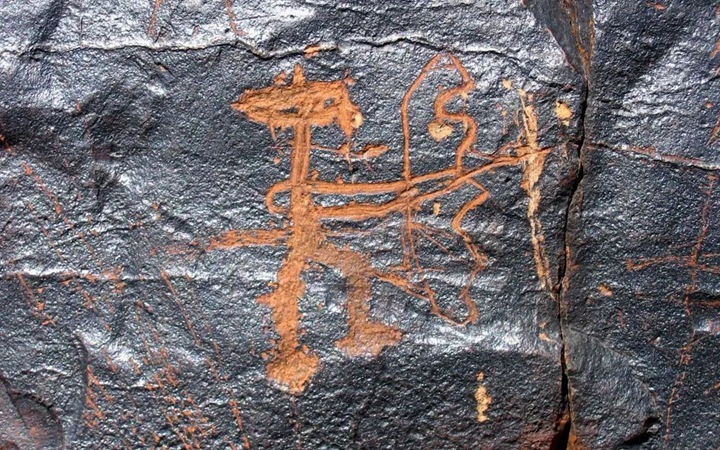
“Drawings that have not yet been properly recorded will be destroyed by lichen”
According to Olga Gumirova, social activists arrived at the place where they plan to build the Rudnichnaya HPP-1 and found out that the construction permit was issued to the company without an archaeological examination.
“The representative of the Institute of Archeology Kairat Zhambulatov right on the spot recorded that during the preparation of the construction site a fairly large burial ground of Saka and Turkic burial mounds was demolished,” Gumirova said. According to her, the company will be fined, and she announced a tender for an archaeological examination after the damage to the burial grounds.
According to public figures, in March the construction of the Talaptinskaya HPP is to begin near the Eshkiolmes petroglyphs cluster – the largest in Kazakhstan and not yet fully understood. According to Gumirova, the construction of a hydroelectric power station near the village of Mambet should begin soon – it is likely that the dam will be located very close to the rock carvings.
“The presence of water will begin to affect the rocks,” Gumirova says. “Drawings that have not yet been properly recorded and filmed will simply be destroyed by lichen.”
According to Alexander Goryachev, a leading researcher at the Margulan Institute of Archaeology, a huge number of trade, caravan and migration routes took place throughout the Koksu River valley, and the valley’s monuments originate from ancient times.
The petroglyphs of the Eshkiolmes ridge were discovered relatively recently – in the early 1970s, it happened by chance during geological exploration. The first expedition of archaeologists showed that this is a unique complex with a huge number of rock carvings.
Goryachev says that according to preliminary estimates, there are about 25 thousand ancient rock carvings in this area. More than 200 burial mounds of the Early Iron Age, burial grounds of the Bronze Age have also been discovered here, and several cemeteries of representatives of Kazakh clans and tribes have been recorded on the mountain pass.
“Before planning something, we need to carefully look at how much information of historical and cultural significance we will lose in the case of this construction,” Goryachev is sure.
The specialist notes that before the construction of the Kapchagai HPP, a special archaeological commission studied ancient burial mounds, settlements and burial grounds at the site of future flooding for several years.
“An attempt to explore this site will lead to such expenses that it is unlikely that the hydroelectric power station will be economically feasible, there are so many archaeological sites there that their study will take some time and resources,” the expert believes.
He notes that the Eshkiolmes ridge itself, together with such petroglyphic complexes as Bayanzhurek, Kulzhabasy and Arpa-Uzen, is included in the nomination of monuments of world cultural significance by UNESCO.
“In the event of the destruction of the surrounding natural landscape, the monument will not only lose the right to be nominated to UNESCO, but several more unique objects will lose the right along with it, since they are all connected, and their authenticity is extremely important for international institutions to recognize it, and the monument is really worthy,” Goryachev also warns.
The Ministry of Culture responded to the request of the “Authorities” that despite the nomination to UNESCO, the issue of the protection of the Eshkiolmes petroglyphs falls within the competence of local authorities. The ministry also noted that the withdrawal of the nomination to UNESCO is not envisaged, but Kazakhstan, as a participating country, can review and update the list of objects that it wishes to nominate.
“This gorge is the most suitable for international competitions”
In addition to archaeologists, athletes and tourism workers oppose the construction of a hydroelectric power station on the Koksu River. According to Konstantin Guk-Senovich, President of the Rafting Federation, the Koksu River hosted the Asian Championship in this sport in 2023 – for the first time in Central Asia.
“We held it exactly at this place, where they are going to build the Mine HPP-1 and HPP-2. This gorge is unique, the most suitable for international competitions,” he said. International rafting federations have also included this site in their register of possible venues for international competitions.
“The International Rafting Federation is concerned about this section of the river and is already writing official letters to our Ministry of Sports so that it will be possible to consider an alternative construction site,” the federation president also said.
According to Guk-Senovich, the Olympic team of Kazakhstan in rowing slalom trains at the same site.
In response to the request of the “Authorities”, the Ministry of Tourism and Sports reported that rafting in Kazakhstan is not recognized as a sport, and the federation is not officially accredited.
Guk-Senovich says that since its foundation in 2005, the federation has been operating at its own expense and has not received any government funding.
“We want, of course, to be included in the register of subsidized sports, but so far, unfortunately, this is not happening,” he said at a press conference in February. – Our sport is already not at the peak of popularity, but it is being kicked.”
The Ministry of Tourism and Sports did not answer the questions of the “Authorities” about the impact of the construction of ten hydroelectric power stations on the Koksu River on tourism in the region.
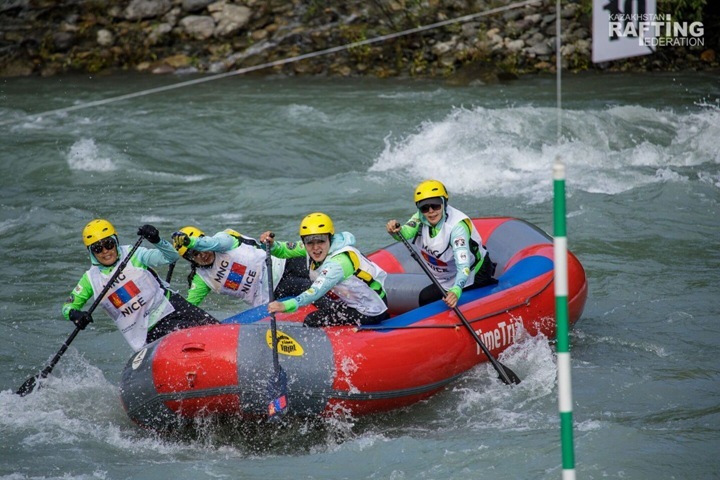
Saltanat Uteshbayeva, the head of the Triton tourist club, says that not only athletes, but also fans of extreme sports, raft down the Koksu River every year. With the construction of many power plants, the river may lose its tourist appeal, she fears.
“I have a five-day route called “Melody of the Koksu River” with a length of 95 kilometers, there are a large number of rapids along the entire length of the route. If the hydroelectric power station is built, there will definitely be some places blocked, somewhere they will let the river through concrete channels, somewhere they will flood, store water,” says Uteshbayeva.
She also fears the possible impact of hydroelectric power plants on agriculture in the region.
“There are a lot of beekeepers in the Kerbulak district, and butterflies and bees are the most sensitive to environmental changes. Along the entire river, many entrepreneurs plant crops such as sugar beets, soybeans, potatoes. With the construction of even one or two hydroelectric power stations, significant damage will be done to the biodiversity of the Koksu River,” she worries.
In the akimat of the Koksu district, the “Authorities” reported that there are more than 1,400 farms growing crops in the district, almost all of them use water from the Koksu River for irrigation.
Two hydroelectric power stations are already under construction in the district. “The construction of hydroelectric power plants does not portend negative consequences for agriculture,” the akimat is confident.
“There are no environmental criteria by which plots for renewable energy facilities are proposed”
According to the Department of Ecology, so far statements about the planned activities have been received from two companies – Energobildservice LLP, which is building Rudnichnye HPP-1 and HPP-2 – for them the state expertise gave a positive assessment back in 2017, as well as from Eskeldinskaya HPP LLP, which is building four hydroelectric power stations. At the same time, one of them, according to the department, does not require an environmental impact assessment, and for another – Talaptinskaya HPP – the department issued a conclusion that such an assessment should be carried out.
The comments on this HPP indicate that the project needs to be coordinated with the Department of the Industrial Safety Committee of the Ministry of Emergency Situations and with the emergency Department of the region. In addition, the Department of Ecology indicated that it was also necessary to provide a map with the boundaries of the HPP site and the boundaries of health, recreational, historical and cultural lands and specially protected natural areas.
Documents on the construction of other planned hydroelectric power plants have not yet been received by the Department of Ecology of the region.
Alexander Kolotov, director of the Rivers Without Boundaries public Foundation, says that the organization has analyzed the reports of the winners of renewable energy auctions.
“They don’t have any environmental criteria anywhere in their rules, according to which plots for renewable energy facilities are offered,” the expert says. He is convinced that a preliminary economic assessment of the plots that are being played at auctions for renewable energy facilities is needed.
“The cumulative impact from all the built facilities will be much greater than from each facility individually. There is no question about this either, no one takes it into account,” Kolotov also notes.
He also says that the Rivers Without Boundaries Foundation has been compiling a special map for two and a half years, which collects data on existing and planned dams on rivers in Central Asia, as well as data on their impact on ecosystems. Analysis of these data showed that there are very few valuable biodiversity sites left in the region.
“Because almost all major rivers are fragmented, there are dams that prevent many migratory species from spawning or living at all,” Kolotov states.
According to the Department of Energy of the Zhetysu region, last year only 38% of the consumed electricity accounted for the own production of the region, the rest was purchased from other sources. According to the plan of the Ministry of Energy, a total of 24 hydroelectric power plants of various capacities on 9 rivers are planned to be built in the region.
The Rivers Without Boundaries Foundation has already drawn attention to the fact that the cost of electricity from HPPs is higher than from other renewable energy sources. According to the International Renewable Energy Agency, the cost of construction and production of electricity for most types of renewable energy continues to fall, while the opposite trend is observed for hydroelectric power plants: since 2010, the cost of building a hydroelectric power plant per kilowatt of installed capacity has more than doubled.
“And it is very clear that none of the private investors wants to take risks themselves, everything is being built only under state aid, under state subsidies,” says Alexander Kolotov.
The expert also emphasizes that Kazakhstan has signed the Aarhus Convention, and it guarantees that the views of all interested parties should be taken into account.
“As far as we can see from media reports, [in the case of Koksu] this simply did not happen. There are references that there were some public discussions, but when the heavy equipment arrived, it turned out that no one was actually at these hearings, which were on paper,” he also added.
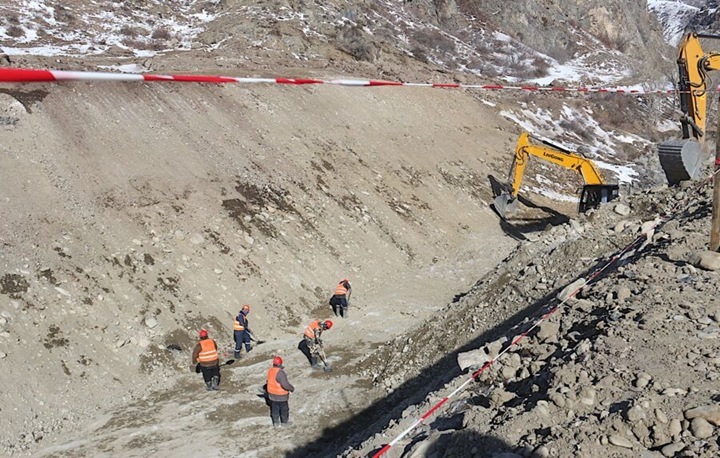
Social activist Andrei Tansari says that the first public hearings on the Rudnichny HPPs were allegedly held in 2017, but the developer does not have their protocol. According to him, the representative of Energobildservice LLP showed the public the list of those present at those hearings, but some residents claim that they did not sign the document.
Another hearing, according to him, was held online at the ecoportal in the fall – after preparations for construction began. At the same time, an announcement about them was published in newspapers that were not subscribed to by residents of Rudnichny and Koksu.
After that, according to the public figure, the authorities held a presentation of the Mining HPPs, where they talked about their advantages, and wanted to present this presentation as a hearing.
According to Tansari, the akimat has drawn up an agreement with the company that is building the HPP, it lists various requirements that the company will have to fulfill.
“As I understand it, the akimat has compiled this list on its own, as they see the development of two settlements: Rudnichny and Koksu. They wrote a lot of things to appease the residents, but [developers], in turn, deny that they will do it all. That is, the residents were cajoled by the fact that it would not be done at all,” the social activist says. – Residents can also be understood: they were promised a job, a gym, a House of Culture, infrastructure, a playground. Who wouldn’t want it all? But the fact is that they are not going to do all this.”
Olga Loginova, Nazerke Kurmangazinova (“Power”)

